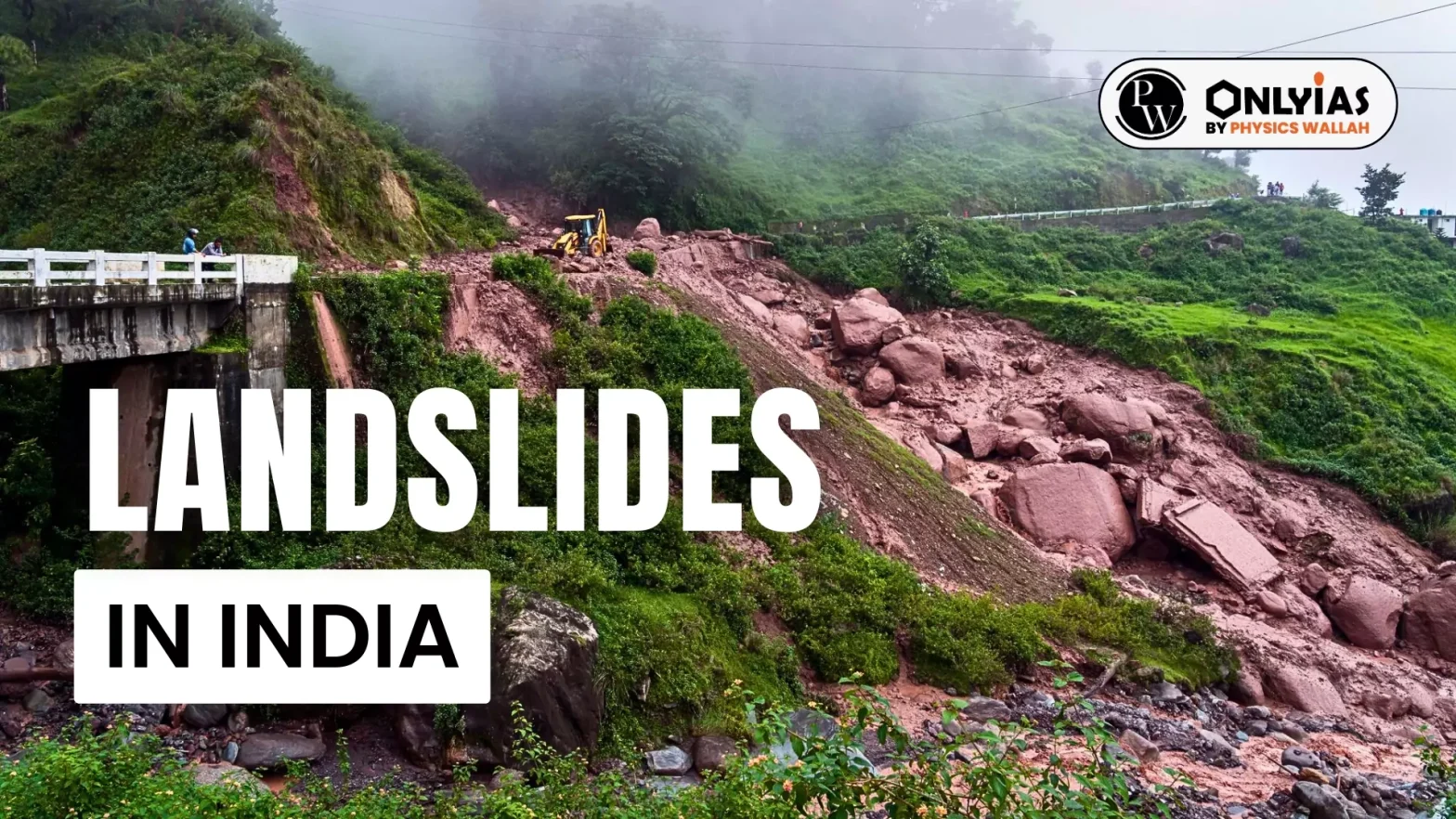Cyclone Remal has led to largescale damage as heavy rain caused by the cyclone triggered landslides in several places in Meghalaya, Mizoram, Assam, and Nagaland, which have resulted in several deaths.
Landslides in India
- IMD Forecast: The India Meteorological Department (IMD) had warned of heavy downpour in the Northeast in all its cyclone bulletins.
- Landslide Prone Region: Almost the entire region, including Sikkim and northern West Bengal, is landslide prone.
- Cyclone-Triggered Landslides: They have hit Northeastern states on earlier occasions as well. Cyclone Aila had caused landslide events in this region in May 2009.
- Multi-Hazard Disasters: The latest episode spotlights the need for building resilience to multi-hazard disasters.
- One event can trigger another, and can lead to multiple disasters simultaneously.
- Landslides and Flooding: Over the last few years, India has witnessed events in which heavy rainfall has resulted in a breach of glacial lakes, causing flash floods that have resulted in landslides and flooding.
- Massive power outages, transport and communication failures, disruption of health services, and difficulties in rescue and relief operations have followed.
Enroll now for UPSC Online Course
What is Landslide & Its Causes?
- Landslides: Sudden movement of rock, boulders, earth or debris down a slope is termed as landslide.
- Factor: When the pull from gravity exceeds the strength of the geomaterial forming the slope of a hill or mountain.
- Due to Natural Factors: Occurs mainly in mountainous terrains where there are conducive conditions of soil, rock, geology and slope.
- Natural causes that trigger it include heavy rainfall, earthquakes, snow melting and undercutting of slopes due to flooding.
Early Warning System For Landslides
- Early Warning System (EWS) Deployment: Some early warning systems have been developed and deployed on a trial basis at a few locations.
- These warning systems are linked to rainfall forecasts from IMD.
- Rainfall Based Prediction: It is combined with soil and terrain information to calculate whether it is likely to result in displacement of land.
- Most landslides in the hilly regions are caused by heavy rainfall. Rainfall-based early warning systems for landslides seem to work well.
- Earthquakes Based Prediction: Earthquakes can trigger landslides too, but we do not see that very often. In the Northeastern region, for example, no major landslide has been triggered by an earthquake in the last one or two decades.
- In any case, since earthquakes themselves cannot be predicted, we cannot have a landslide early warning based on earthquakes.
- Development and Deployment of EWS: As of now, only a few of these location-specific early warning systems have been deployed.
- CBRI and IIT Roorkee are in the process of installing these at two locations in Sikkim, another two in Uttarakhand, and one in Kerala.
- Other institutions like IIT Mandi are also working to develop and set up early warning systems.
Human Pressure
- Excess Load: The risk from landslides has been exacerbated by the failure to remain mindful of the terrain’s ability to withstand the load.
- Lack of Regulations: Many hilly areas do not have building regulations. Often, regulations are not implemented effectively.
- Construction and Development: New constructions, infrastructure development, and even agricultural practices can increase the risk of landslides.
- Exceeding Carrying Capacity: Every mountainous area has a carrying capacity. Development is essential, and one cannot stop the creation of infrastructure or new facilities or economic activity for local populations.
- But these have to be regulated. Sustainability has to be factored in, so that the load does not exceed the carrying capacity.
- This is where zoning regulations come in. These have to be finalised and implemented strictly.
Enroll now for UPSC Online Classes
Conclusion
Building resilience to multi-hazard disasters in India’s landslide-prone regions requires stringent zoning regulations, effective early warning systems, and sustainable development practices.
![]() 30 May 2024
30 May 2024

